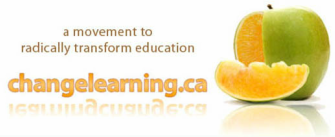|
Today’s students are the first generation to grow up in the midst of digital technology and these very different experiences have changed the way they think, behave and, quite possibly, the physical structure of their brain. These students require radically different methods to engage them in the learning process and maximize the potential of new technologies that surround them.
Changing How They Process Information. This new generation of “Digital Natives” has had such a different range of experiences during key developmental phases, that they actually think and process information differently1. “They develop hypertext minds. They leap around. It’s as though their cognitive structures are parallel, not sequential2”. Because they have become accustomed to receiving information very quickly, they are adept at parallel processing and multi-tasking. “They function best when networked. They thrive on instant gratification and frequent rewards3”. This means that lectures and the typical step-by-step instructions common in our current teaching methodologies do not work to engage them. In fact, the “linear thought processes that dominate educational systems now can actually retard learning for brains developed though game and web surfing processes on the computer4”.
Changing the Role of the Teacher.
Growing up in the digital era means easy access to all forms of information at breakneck speed. Our educational system has been unable to keep pace with the possibilities and implications for children navigating the learning process within this new landscape. The unlimited access to information which can now be now viewed and digested at a student’s own rate of learning and in accordance with a student’s own level of interest, significantly changes the dynamics of the learning environment5. While the teacher generally teaches in a specific, grade-related order, presenting predetermined information in installments, students are now functioning in an ungraded, unlimited and interactive environment. Students have the power to decide for themselves what is easy, what is appropriate, what they want to learn and how long they will take to learn it. The unquestionable authority that adults once had over children is disappearing6. Our system, however, still places the teacher as expert in front of a classroom (now woefully less dazzling than what is on the computer screen), doling out information that may not be as up to date as what the student is able to find on their own. Youth (especially at the adolescent level) are forced to “learn” within a rigid system that does not match with the world in which they function or the interest and interaction that they encounter outside the walls of the classroom. It creates a recipe for disengagement.
The Need for New Skills.
Compounding the issues of how we are teaching is the issue of what we are (or are not) teaching to help youth deal effectively with the new realities of the digital era. The ways that these students have learned to process information may well lead to deficits in other skill areas that are imperative for deep understanding of concepts, problem solving and creative thinking. Raised in an environment of instant response and immediate feedback, we need to help youth develop concentration skills, the patience to persevere and the ability to postpone gratification in order to complete larger tasks. In addition, the sheer amount of information now available means that new skills are needed to be able to sift through what is available and differentiate valid sources (Studies indicate half of senior high school students couldn’t correctly judge the objectivity of a website7). Youth also need to be able to organize smaller bits of information within a larger picture, to synthesize and draw conclusions. They need to be able to place isolated facts in a context that gives it significance in order to turn information into knowledge8. Without those abilities, youth will be subject to not only misinformation, but manipulation. What really is more important in education than preparing our children to function and thrive in the world in which they live? We can not continue to assume that what worked for students raised before the digital era will work for students today.
Digital Natives: Are Kids Different Because of Digital Media?
Taking Advantage of the Possibilities. Our current education system was originally built around the technologies of the time – talk, pencil, paper and textbooks – and these are still the predominant tools used in our classrooms today.
On the surface it would appear that we are keeping pace with technology. Current estimates indicate that 99% of elementary and secondary schools in Canada have computers in their school and 90% of those computers are connected to the internet and available to students9. Upon closer inspection, however, there are several very disturbing realities. The most common application that is frequently used in schools is word processing and less than 30% of principals reported that use of the Internet/Intranet for online learning was frequently incorporated into teaching practices.
There is a significant difference between having computers or internet available for students and actually utilizing the extensive potential of information and communication technology for real learning opportunities. The current educational system is losing out on the vast possibilities available to form multi-sensory collaborative learning environments that bypass the traditional restrictions of time, place and formal structures. These technologies could provide unique opportunities for interaction and stimulation that are needed to engage our new breed of digital learners.
|
The notion of learning at the “edge of chaos” fits well with what learning theory tells us about the conditions that maximize human learning. Featured VideoPrograms at Work |
- Mark Prensky, Digital Natives, Digital Immigrants, On the Horizon,NCB University Press, Vol. 9, No. 5, October 2001.(Note: link to fulltext of article is near the top of Prensky’s page, under “The Classics”).
- Dr. William Winn, in Inferential Focus Briefing, 1997 as cited in Digital Natives Digital Immigrants, Part II: Do They Really Think Differently? Marc Prensky, On the Horizon, NCBUniversity Press, Vol. 9, No. 6, October 2001.
- Mark Prensky, Digital Natives, Digital Immigrants, On the Horizon,NCB University Press, Vol. 9, No. 5, October 2001.(Note: link to fulltext of article is near the top of Prensky’s page, under “The Classics”).
- Peter Moore, Inferential Focus Briefing, 1997 as cited in Digital Natives Digital Immigrants, Part II: Do They Really Think Differently? Marc Prensky , On the Horizon, NCB University Press, Vol. 9, No. 6, October 2001.
- Nicholas Negroponte, Being Digital, NY: Alfred A. Knopf, Inc 1995.
- Edna Aphek, Children of the Information Age: A Reversal of Roles in Ubiquity, a a Web Magazine of the Association for Computing Machinery, 2001.
- How to bring US schools into the 20th Century, Time Magazine, Dec. 18, 2006.
- Distinguished scientist Baroness Greenfield as quoted in Jackie Ashley, New technology may be changing the human brain, Monday April 24, 2006, Guardian
- Canadian Education Statistics Council, Education Indicators in Canada: Report of the Pan-Canadian Education Indicators Program 2005 (Ottawa: Canadian Education Statistics Council, 2006; Statistics Canada Catalogue 81-582-XIE).



